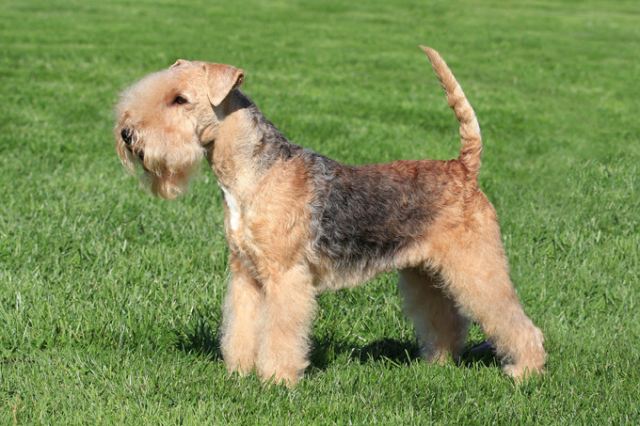Lakeland Terrier
IUCN
LCBasic Information
Scientific classification
- name:Lakeland Terrier
- Scientific Name:The Patterdale Terrier
- Outline:Carnivora
- Family:Canidae
Vital signs
- length:34-37cm
- Weight:7-8kg
- lifetime:10-12year
Feature
Bold, cheerful, friendly, and confident. They have an indomitable spirit and strong fur, and can endure the heaviest rain or the coldest weather. They are strong, docile, and lively, and are easy to get close to.
Distribution and Habitat
Originated from the UK
Appearance
The head is rectangular with powerful jaws. The coat is densely wiry, with longer frills on the muzzle and legs. The eyes are small, some are oval, and set far apart. In amber or brown dogs, the eyes are darker brown to soft brown, with brown rims. In other colors, the eyes are soft brown to black, with black rims. The ears are small, V-shaped, folded over the skull, with the inner edge close to the skull and the outer edge close to the outer corner of the eye. The top of the skull is flat and of moderate width, and the cheeks may be flat and smooth. The muzzle is strong, with a straight bridge of the nose, which is located below the eyes. The head is symmetrical, rectangular, and the length of the skull is the same as the length of the muzzle. The nose is black. The lips are black. The jaws are powerful. The teeth are large, with a strong or scissor bite. The neck is relatively long; delicate and strong; there is no fat at the throat; it is slightly arched, smooth and gradually wideni
Details
The Lakeland Terrier was originally called the Patterdale Terrier. It was developed by mating the Bedlington Terrier and the Old English Wirehaired Terrier in the northern lake area of England. There were many branches, which were classified as one in 1912. Similar to the Welsh Terrier, but slightly smaller and narrower, this body shape makes it easier for it to drill into stone caves and complete the task of hunting foxes and badgers. He has long enough legs to enable him to adapt to various rugged terrains.

The Lakeland Terrier is the oldest working terrier and has always been familiar to people. Before the establishment of the Kennel Club or official records, the Lakeland Terrier was bred and trained to work in the Lake District of England. This dog has strong working ability. The name "Lakeside" is actually a modern name. In ancient times, it was called Patterdale Terrier. In the past, it was used to hunt small animals such as badgers, foxes and otters, and could chase prey in water and uneven terrain. Later, this beautiful breed was transformed into a popular companion dog and show dog. It won the show in 1967 and 1968 respectively. It was recognized by the American Kennel Club (AKC) in 1921.
The greatest thing about this terrier is underground long-distance hunting. According to records, in 1871 Lord lonsdale had a Lakeside Terrier crawling more than 7 meters under the rocks to track a sea otter. In order to rescue the Lakeside Terrier, a large-scale excavation must be carried out. Finally, after 3 days of work, people found the dog and it was rescued. No other dog had a more difficult experience than it. This type of dog was blocked underground for 10 to 12 days and was still alive after being rescued. This is impossible for other breeds of dogs.
About 1896, standards were made at agricultural shows throughout the Great Lakes region to distinguish the Lakeland Terrier from other similar-looking terriers, such as fox terriers and otterhounds. There was great interest in this ancient breed, and the owners of the hounds or other experienced hunters were the judges. At that time, there were mainly blue-gray, black-brown, red or khaki, and a few white Lakeland Terriers. Later, the color classification was replaced by the main classification of white and parti-colored working dogs. In short, working ability is always a consideration.
White Lakeland Terriers usually work with otterhounds, because in many cases it is the hounds who are excited to drive the otters out from under the roots of trees or drainpipes while the darker terriers drag them out in the mud.
Experienced terrier breeders believe that the Lakeland Terrier's distant ancestors are somewhat similar to the ancestors of the Border Terrier. In fact, there is strong evidence that the Lakeland Terrier is closely related to the Dandie Dinmont Terrier, which was later recognized as a descendant of the Burlington Terrier.
The typical Lakeland Terrier should be bold, jovial, friendly, and confident. They have an indomitable spirit and a strong coat that can endure heavy rain or cold weather. They are strong in physique, docile and lively, and easy to get close to people. They are full of confidence and have the demeanor of a king.
Protect wild animals and stop eating game.
Maintaining ecological balance is everyone's responsibility!








